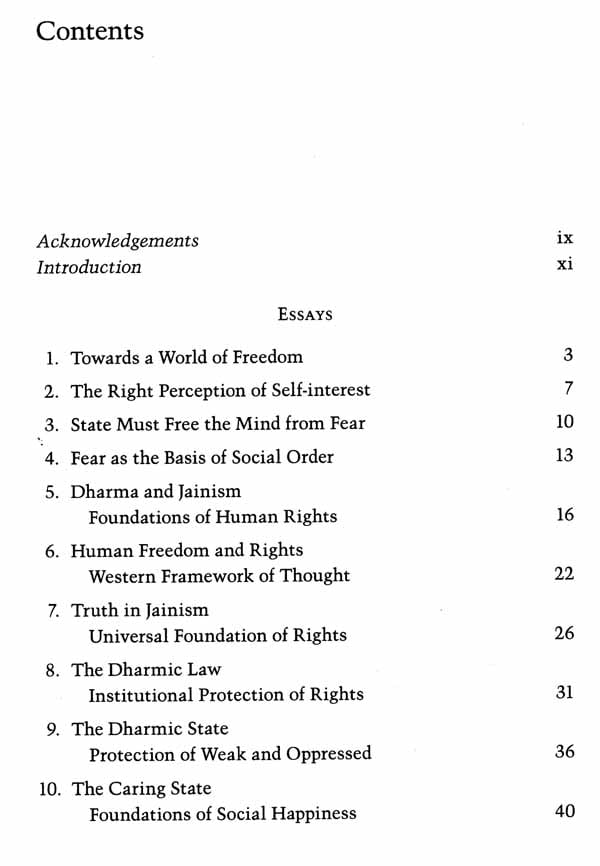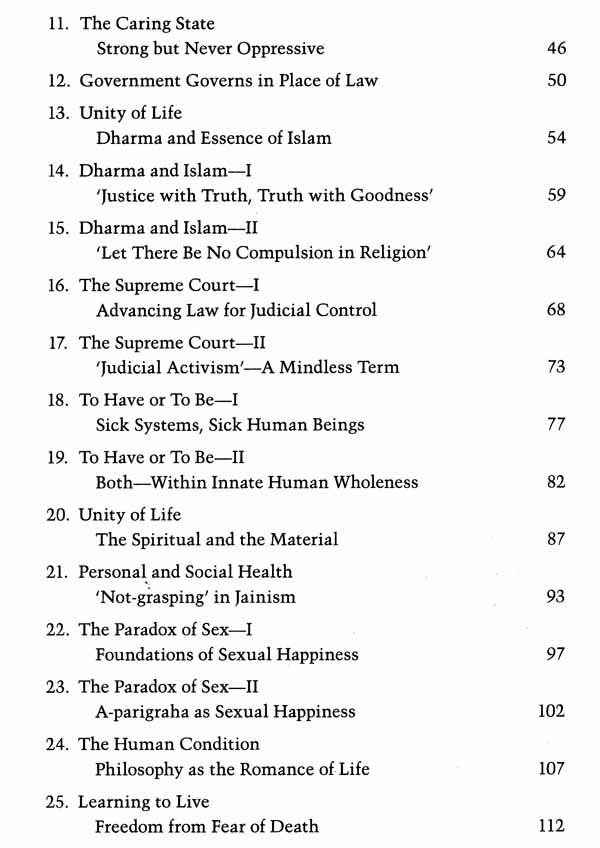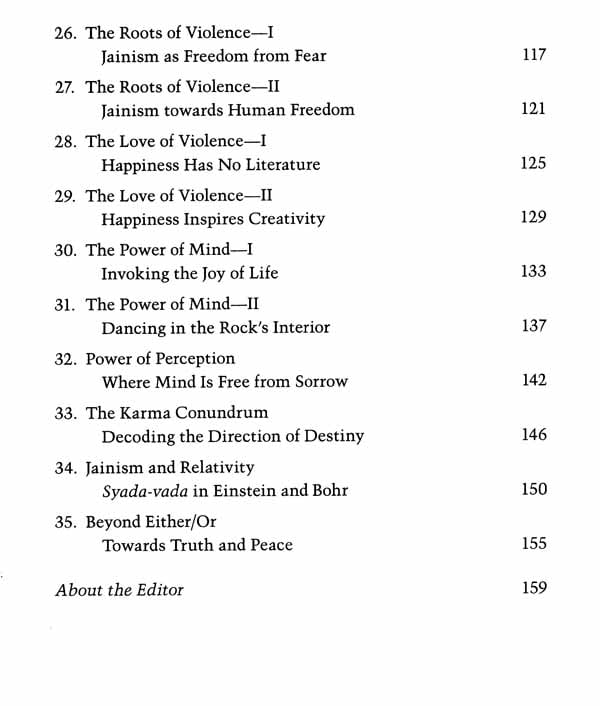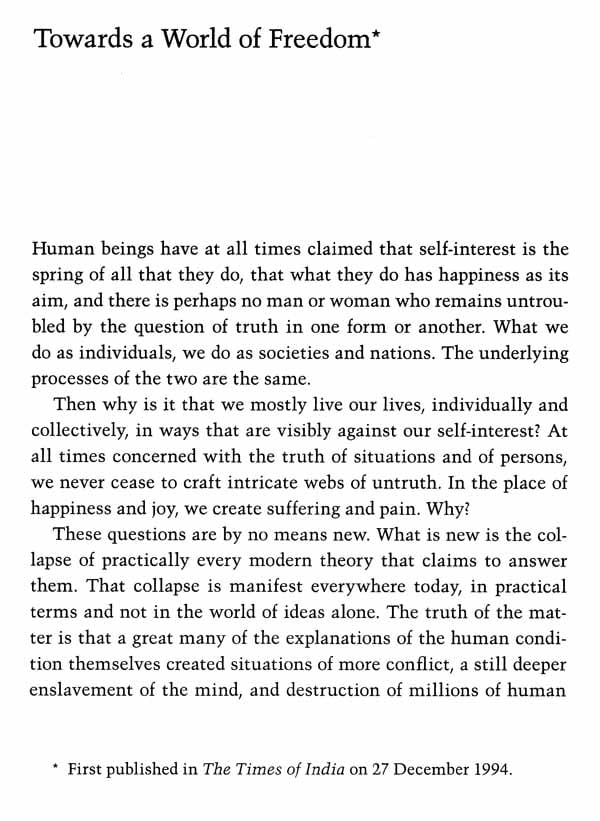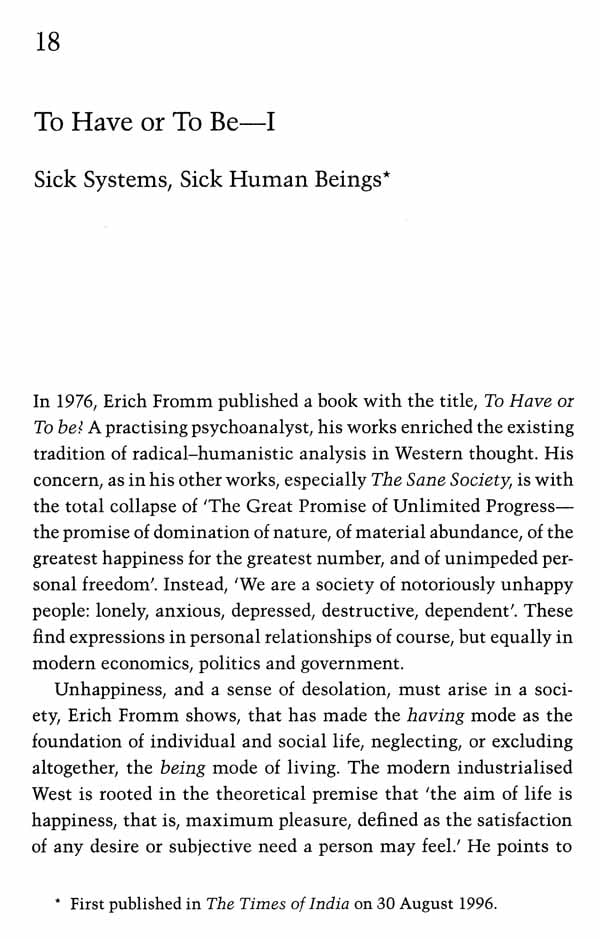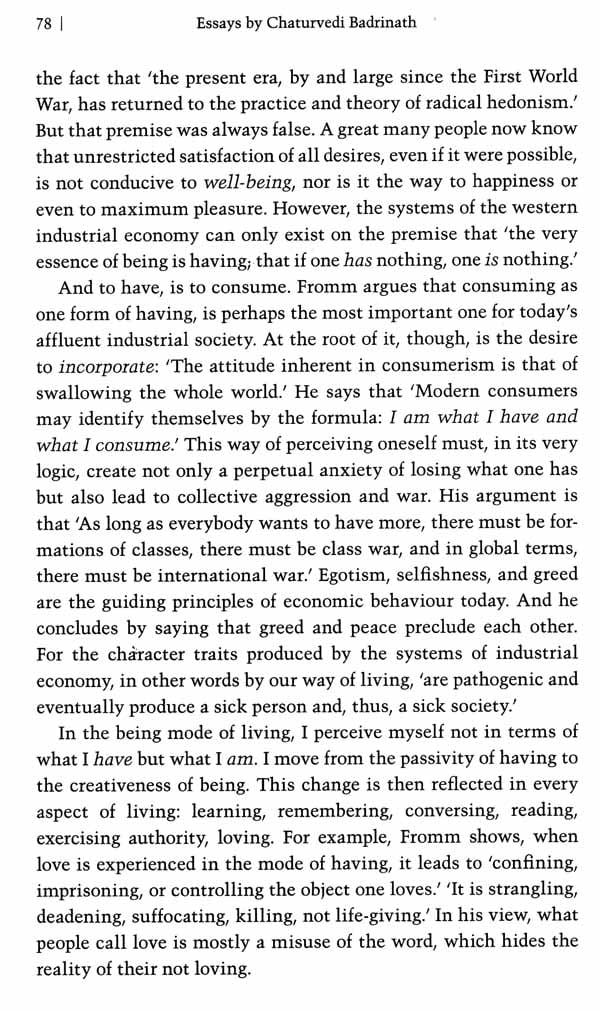
Chaturvedi Badrinath- Unity of Life and Other Essays
Book Specification
| Item Code: | NAY082 |
| Author: | Tulsi Badrinath |
| Publisher: | Oxford University Press |
| Language: | English |
| Edition: | 2016 |
| ISBN: | 9780199465187 |
| Pages: | 159 |
| Cover: | PAPERBACK |
| Other Details | 8.50 X 5.50 inch |
| Weight | 220 gm |
Book Description
Chaturvedi Badrinath (1933‒2010), a recipient of the Sahitya Akademi Award, 2009, for his work The Mahābhārata: An Inquiry in the Human Condition, was a passionate scholar of Indian philosophy, strikingly original in his approach. An Indian Administrative Service officer for 31 years, he delivered lectures on the concept of dharma and its application in modern times for which he drew extensively from the Mahabharata. In 1995, he was invited by The Times of India to contribute essays on Indian philosophy and thought. In the form of lucid discourses for the layperson, these dealt with dharma as the foundation of civilization. Ranging over perceptions of the self and the other; different ways of ordering society in Jainism, Islam, and Christianity; the paradox of sex; the roots of violence; and the quest for truth and peace, these essays gained wide acclaim and popularity. Badrinath’s daughter, Tulsi Badrinath, brings these essays together to present the reader with a book that explains the complex ideas of Indian philosophy in simple and accessible language.
Tulsi Badrinath is an acclaimed writer and dancer. Her novels Meeting Lives and Man of a Thousand Chances were longlisted for the Man Asian Literary Prize.
Hours before he passed away in Puducherry, my father, Chaturvedi Badrinath, was conferred the Sahitya Akademi Award for his book The Mahabharata: An Inquiry in the Human Condition. I received it in New Delhi on his behalf as he was not well enough to travel, but by the time I returned to Puducherry the next day, 17 February 2010, it was too late. He never got to see the plaque, the shawl, the cheque in his name; nor I my father alive.
It was almost as though he had waited for the day of the ceremony, arranged for me, his only child, to be far away so I could not fight against the moment, and then departed. Most of his friends agreed that he lived life on his own terms, and in death, too, it had to be just so. He did not fear its inevitability-having absorbed so much of what the Mahabharata had to say on time, kala, and mrityu (death)-and left his affairs in order.
The plaque occupies space on his bookshelf.
No matter where he lived-and he built four houses in his lifetime-one wall of his home was filled from the floor to the ceiling with books. Returning home from office, he would spend the evening working at his typewriter, seated in the comforting presence of his books. Leaning back, often to puff on his pipe, he would stare dreamily into space before starting to write the next line or paragraph, often late into the night. If he wasn't smoking, then holding the warm bowl of the pipe in his palm served equally as stimulus, and his words on philosophy were suffused with the aromatic smoke of Erinmore, Three Nuns, Borkum Riff, or Balkan Sobranie-the strange names alone cause for wonder.
One shelf was filled with the maroon cloth-bound volumes of the Mahabharata printed by Gita Press, Gorakhpur, and often one or two of these lay open on his desk while he worked. Of all the many parts of the epic, his copy of the Shanti Parva is the most worn: pages have come apart from the binding, verses are ticked in pencil, and bits of paper act as bookmarks. I will never forget his sense of exultation when he found three verses in the Shanti Parva that answered his question: What is the meaning of dharma? A discovery that came after nearly a quarter century of studying the vast epic.
It was in this section of the Mahabharata that he mined much of what he had to say about dharma and life-both in personal and public spheres, the understanding of the self and of the other, the foundations of self-interest linked to a-himsa or not-violence, the search for happiness, freedom from fear, the role of the king and governance, and, ultimately, freedom from and freedom into-the two ways of understanding moksha.
My father was born in 1933 in Mainpuri, Uttar Pradesh. He studied at St. John's College in nearby Agra, before heading to Lucknow University where he got his BA Honours in psychology and philosophy. He was admitted to University College London as a research scholar under the renowned professor A.J. Ayer, but interrupted his studies to join the Indian Administrative Service (IAS) in the 1957-8 batch. Choosing to serve in Tamil Nadu, he spent the next 31 years of his life in the south.
Simultaneously, he followed his intellectual pursuits. Twice, in 1965 and 1970, he was invited by the Government of the Federal Republic of Germany to interact with students in the universities there. He was a Homi Bhabha fellow from 1971 to 1973, and around the same time travelled as a visiting professor to Heidelberg University to speak on dharma. Following his report on the urban development of Greater Madras, written while he was collector of Madras, he was, as a guest of the British government, invited to study the developments in the philosophy of local self-government in England.
It was in 1973 that he was sent the script, by its author, of India's history since 1947. Indira Gandhi, the then prime minister, had buried this text along with other contents in a time capsule at the Red Fort to commemorate the memory of her father Jawaharlal Nehru. My father was quite surprised on reading the script approved by the Indian Council of Historical Research at how factually incorrect it was. At a public lecture on the Idea of History at the Presidency College, Madras, he criticized the rationale of such a text. Both The Hindu and The Mail reported the substance of his lecture.
He said,
The journey from history to anti-history is short. Shorter still the journey from history to fancy. The shortest, however, is the journey to collective lies. We made them all, the posterity would wonder why, when on August 15, 1973, we put deep in the bowel of an Indian earth, secure in a time capsule, an account of our 25 years of independence. Meant for posterity this account is neither history, nor fiction and whatever it is, is written badly.
He then went on to detail some of the inaccuracies and lacunae. This led to a furore. Angry debates were held in the Lok Sabha (on 7 and 22 December 1973) and the Rajya Sabha (on 13 March 1974), and, ultimately, when the Morarji Desai government came to power, the time capsule was excavated in 1977.
It was to lead to repercussions in my father's career.
Lecture given at Presidency College, Madras, on 7 September 1973. Reported as 'Time Capsule & History/Contradiction in Facts', in The Mail on 8 September 1973 and as 'Time Capsule: Authenticity Questioned', in The Hindu on 10 September 1973.
**Contents and Sample Pages**
